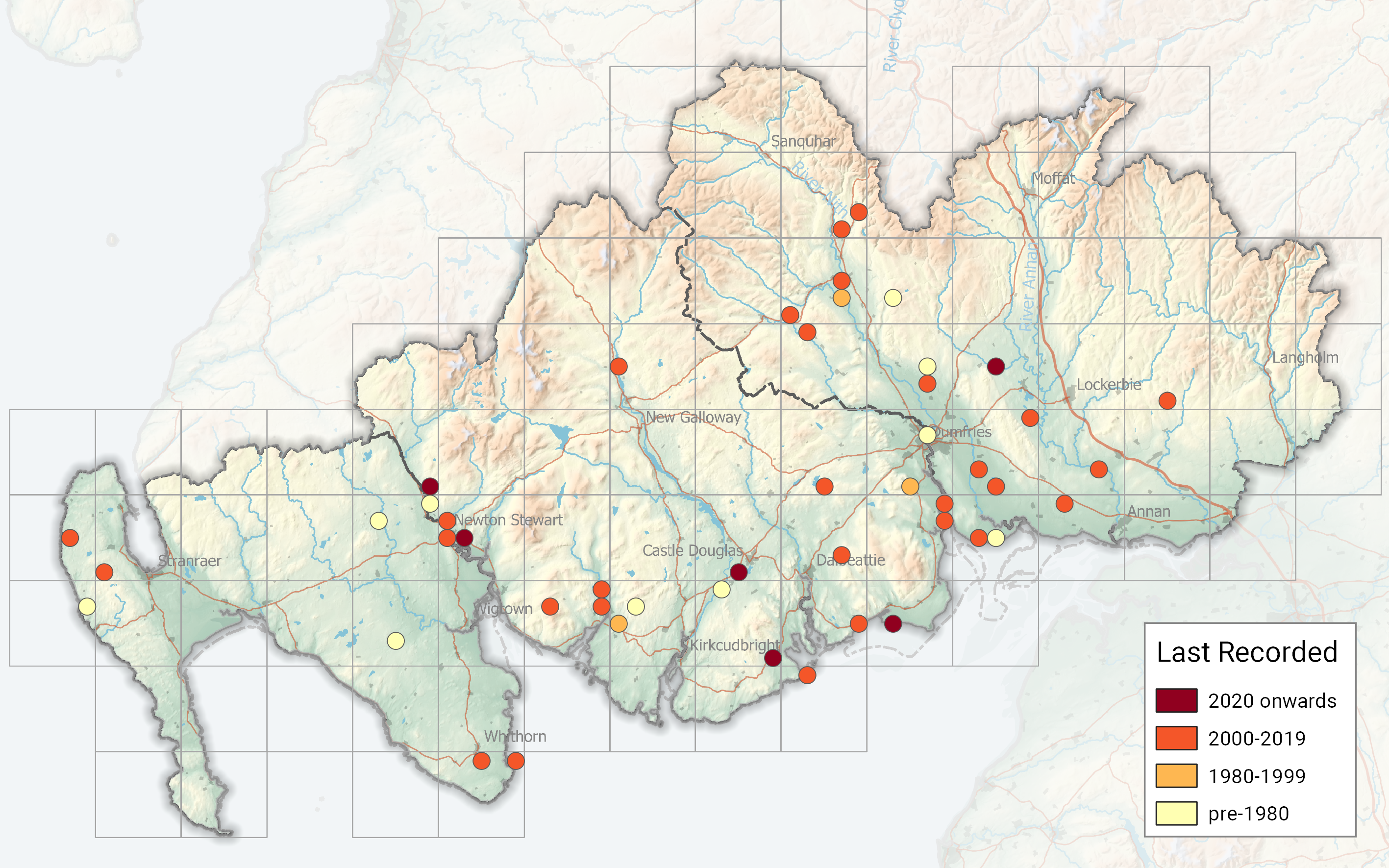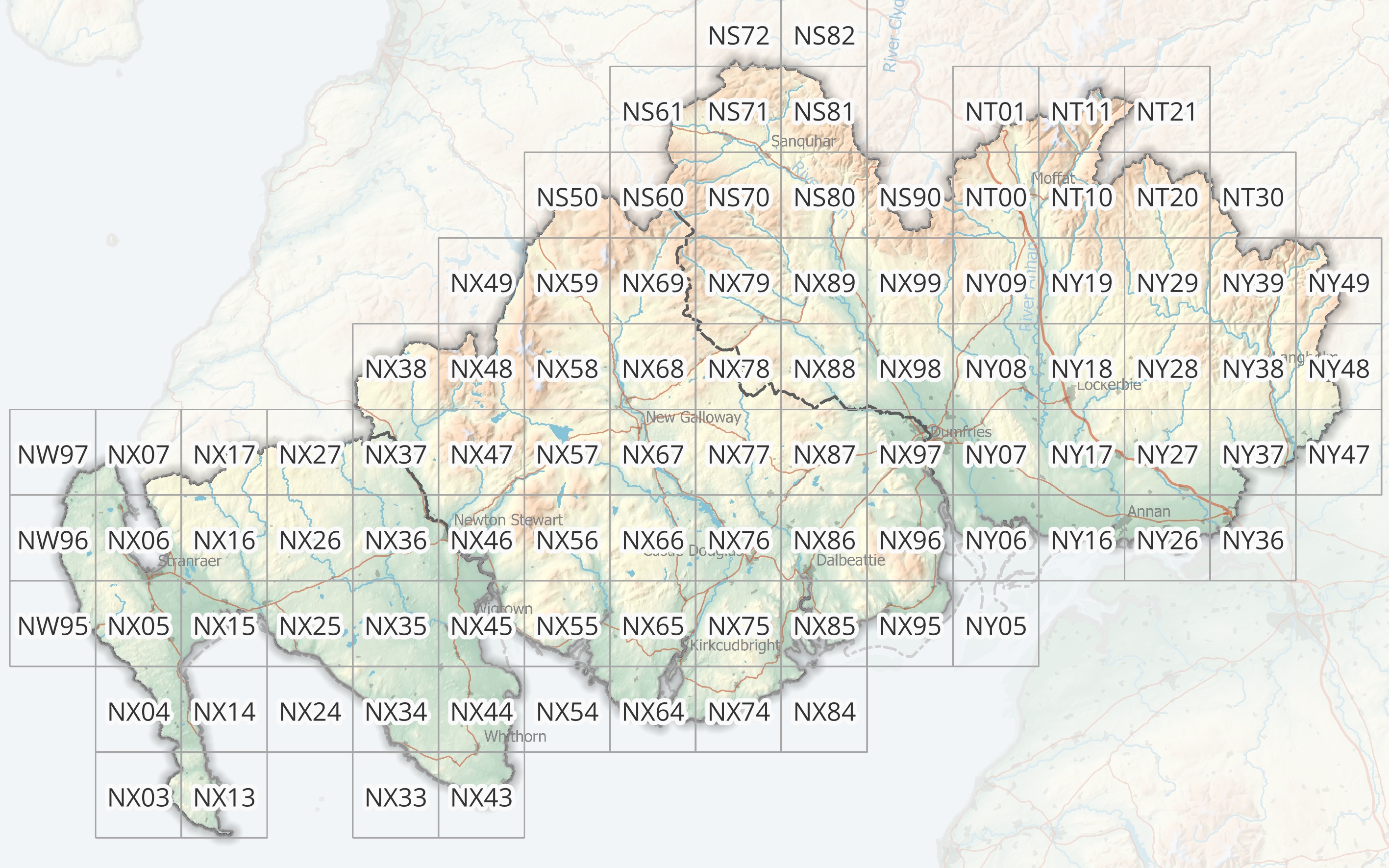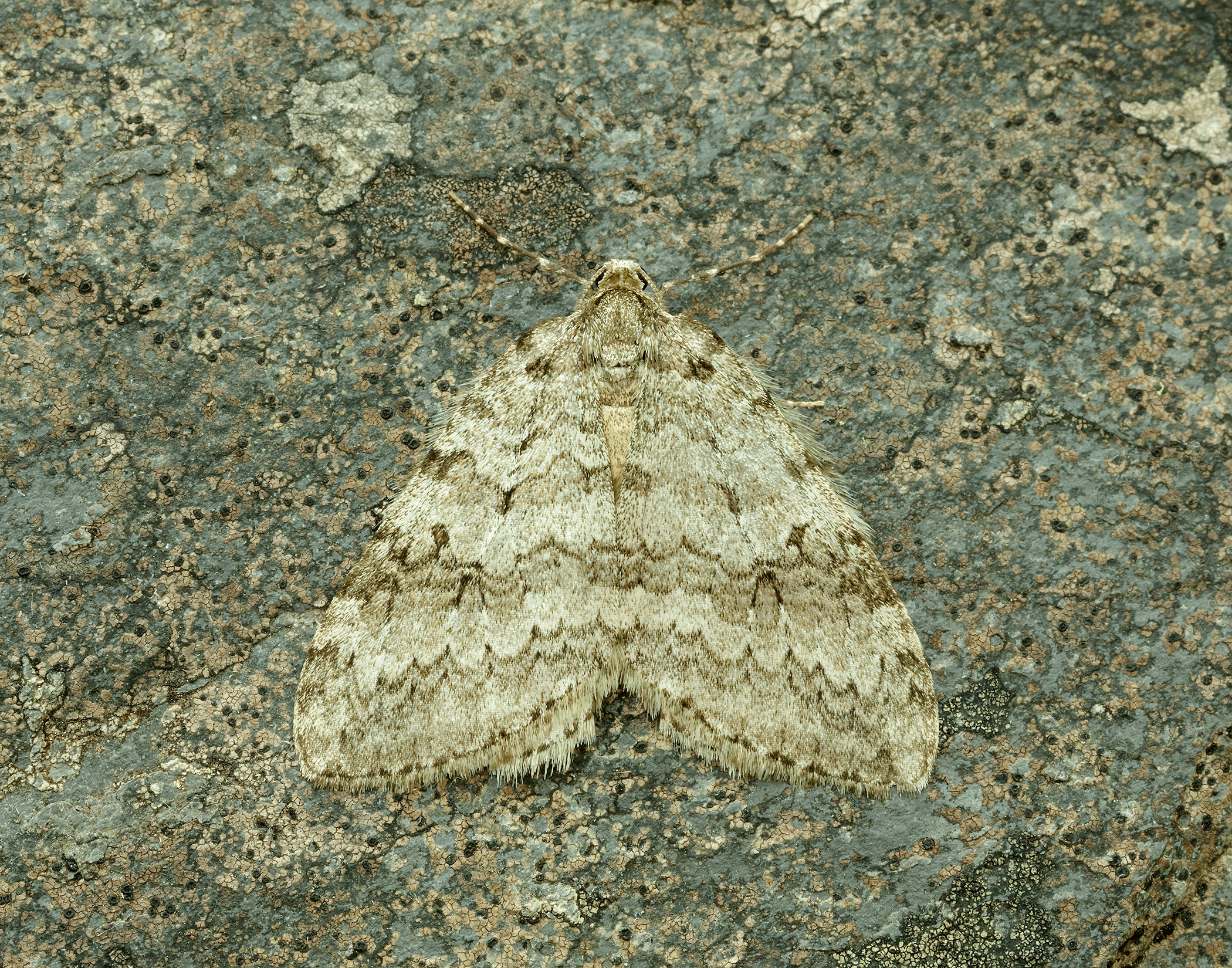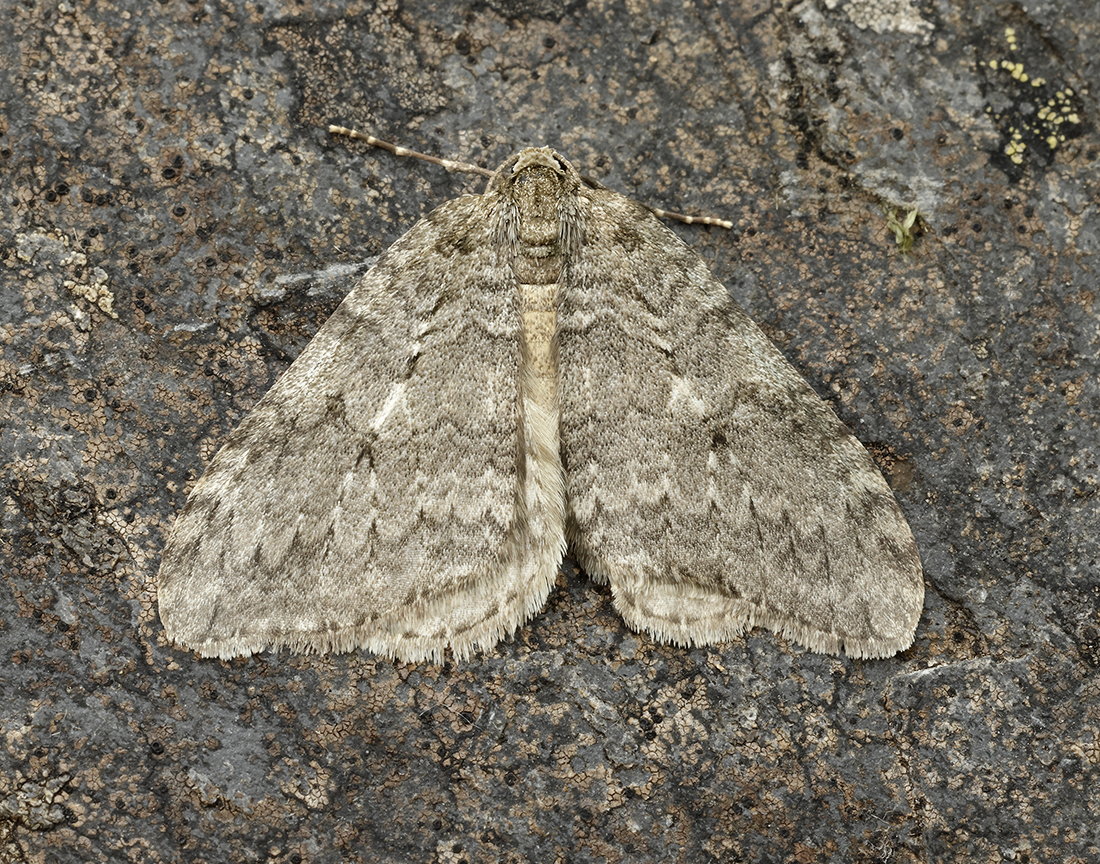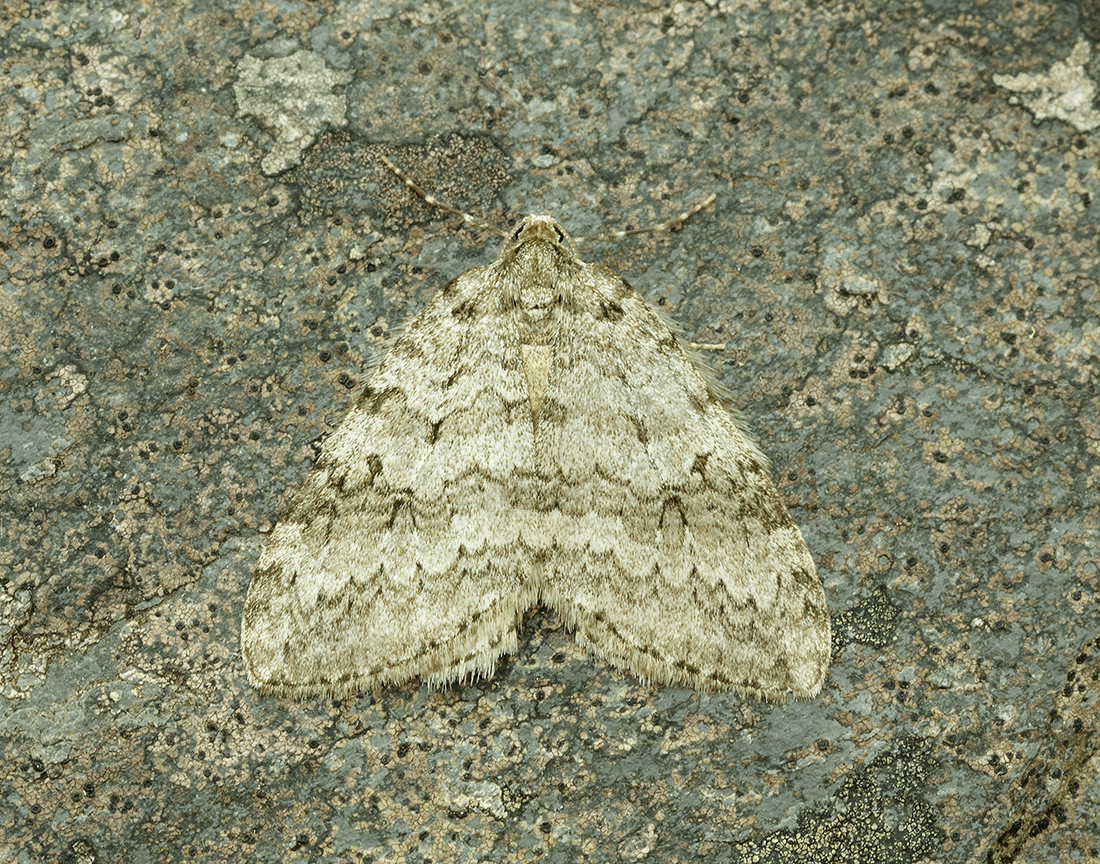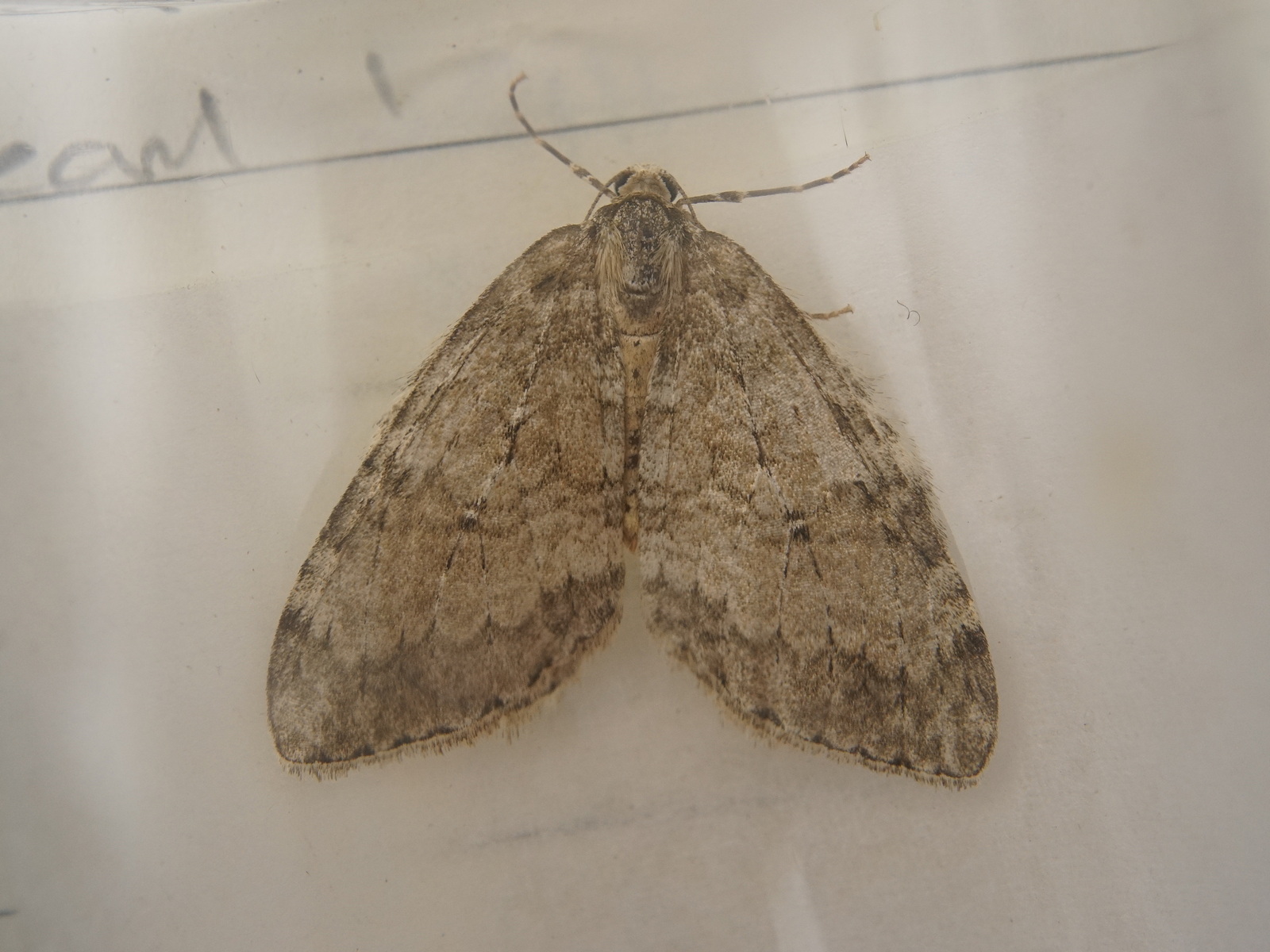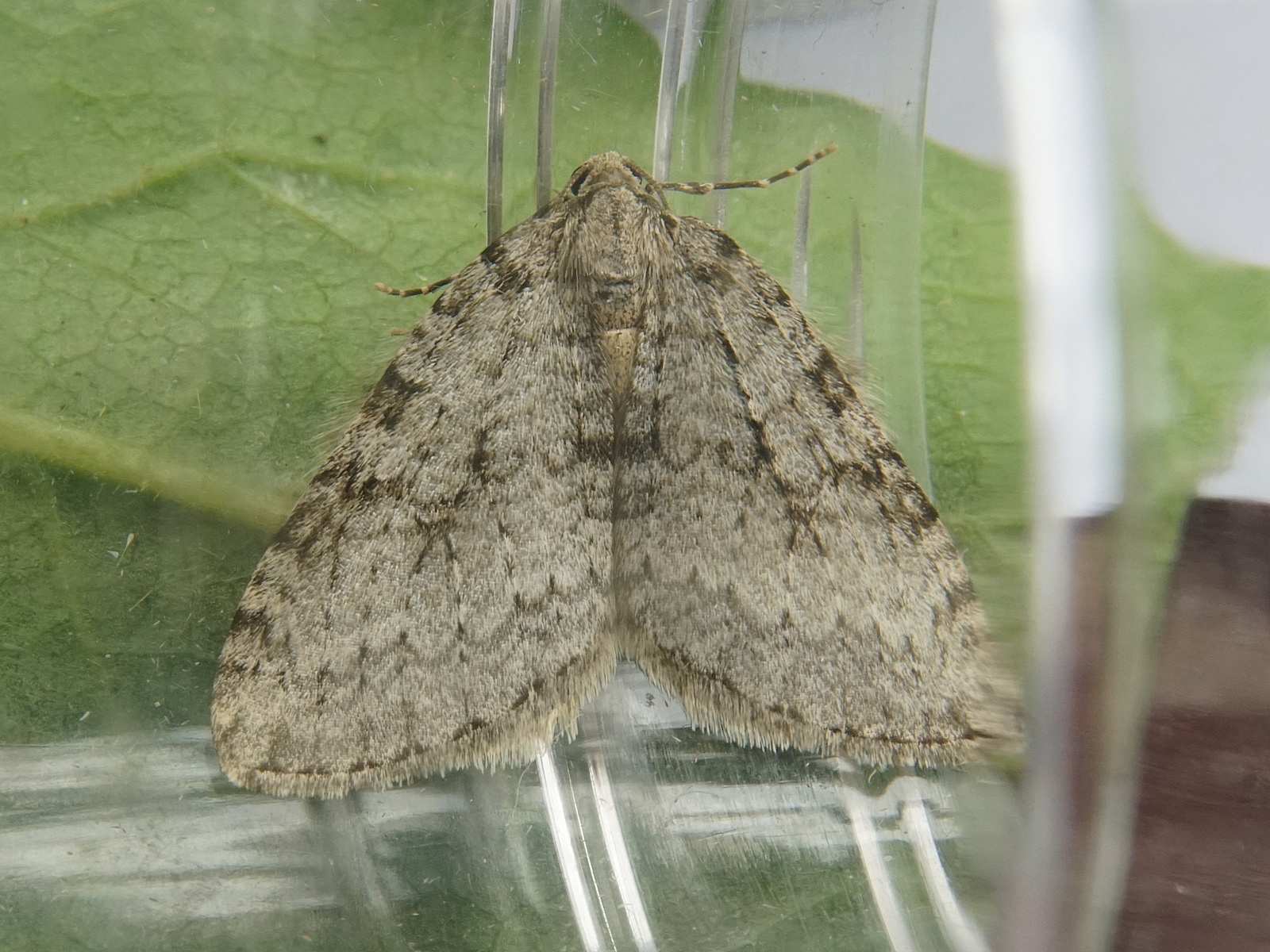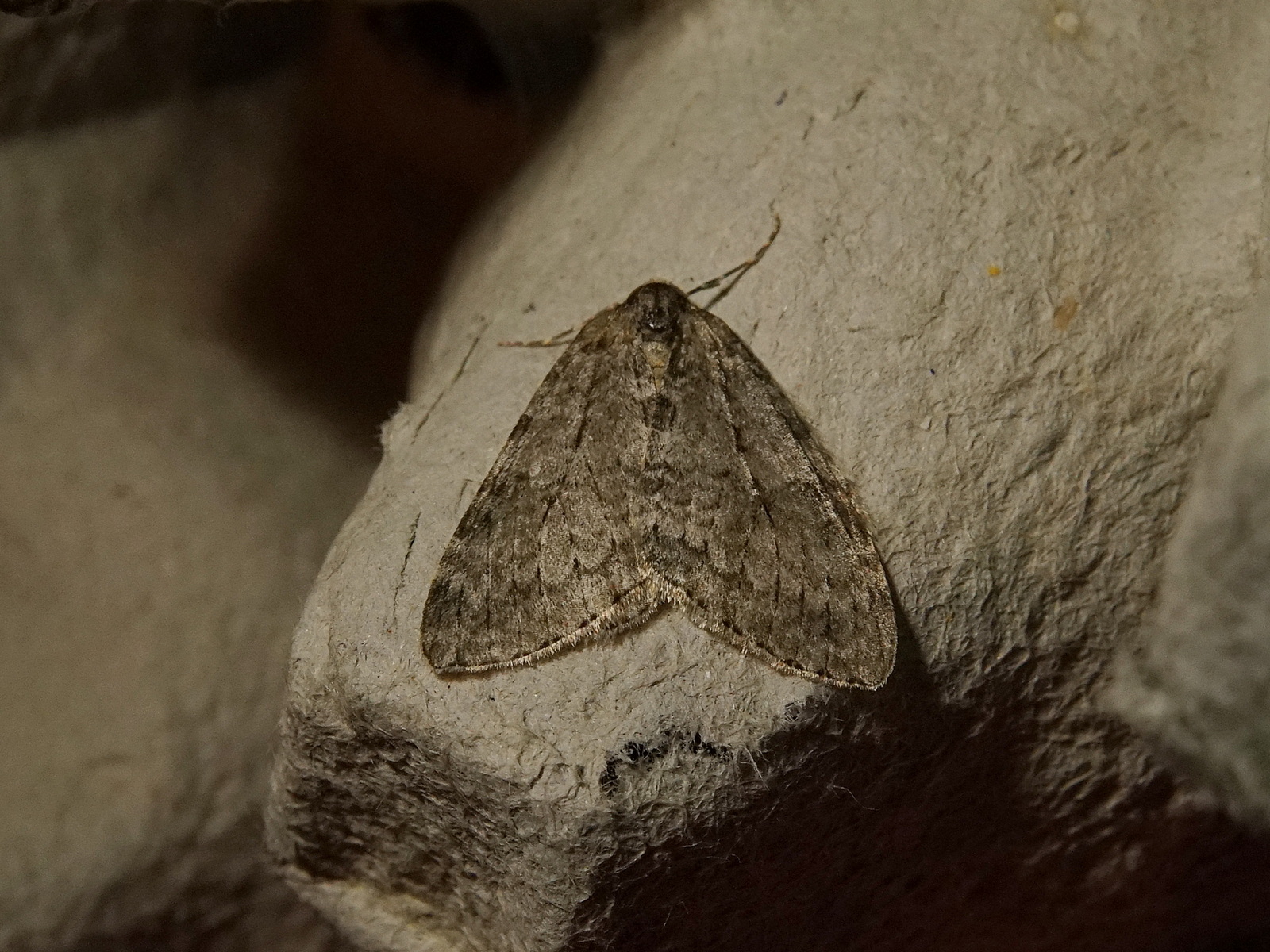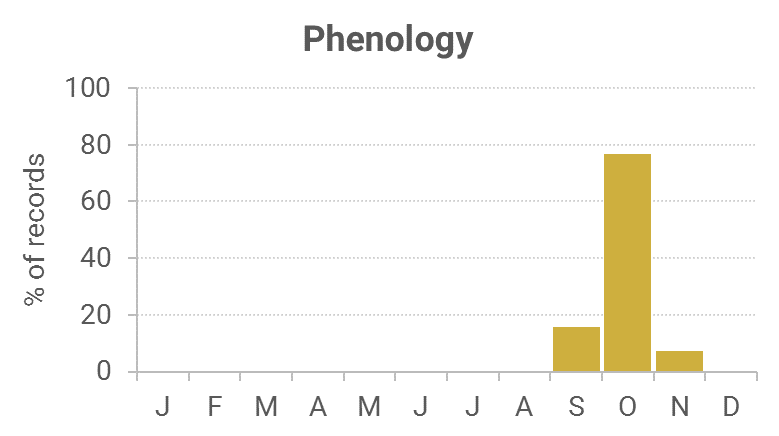Identification
Use the criteria explained in Waring et al. (2009) and Skinner (2009) to identify the males, but if worn, genitalia examination is necessary. Even this method is useless for females, but rearing from eggs might lead to the males being determined. Only take a minimum of specimens for determination at any one site.
Record undissected specimens as November Moth agg. (Epirrita dilutata agg.).
Recording method
Comes to light, often in large numbers.
Life cycle
One generation. Overwinters as an egg on bark or a twig. Larvae are present April to June, with pupation taking place underground.
Larval foodplants
A wide variety of broadleaved trees and shrubs.
Habitat
Mainly broadleaved woodland, but also garden and hedgerows.
History
First recorded for Dumfries and Galloway in 1862 for VC72 near Dumfries by Lennon who stated it was ‘common everywhere around the Dumfries area’, in 1893 for VC74 at Corsemalzie by Gordon who found it to be ‘common and generally distributed in Wigtownshire, mainly flying after dark in woods and along hedge sides’, and in 1942 near Gatehouse of Fleet by Russell.
This is the most numerous of the four Epirrita moths.

